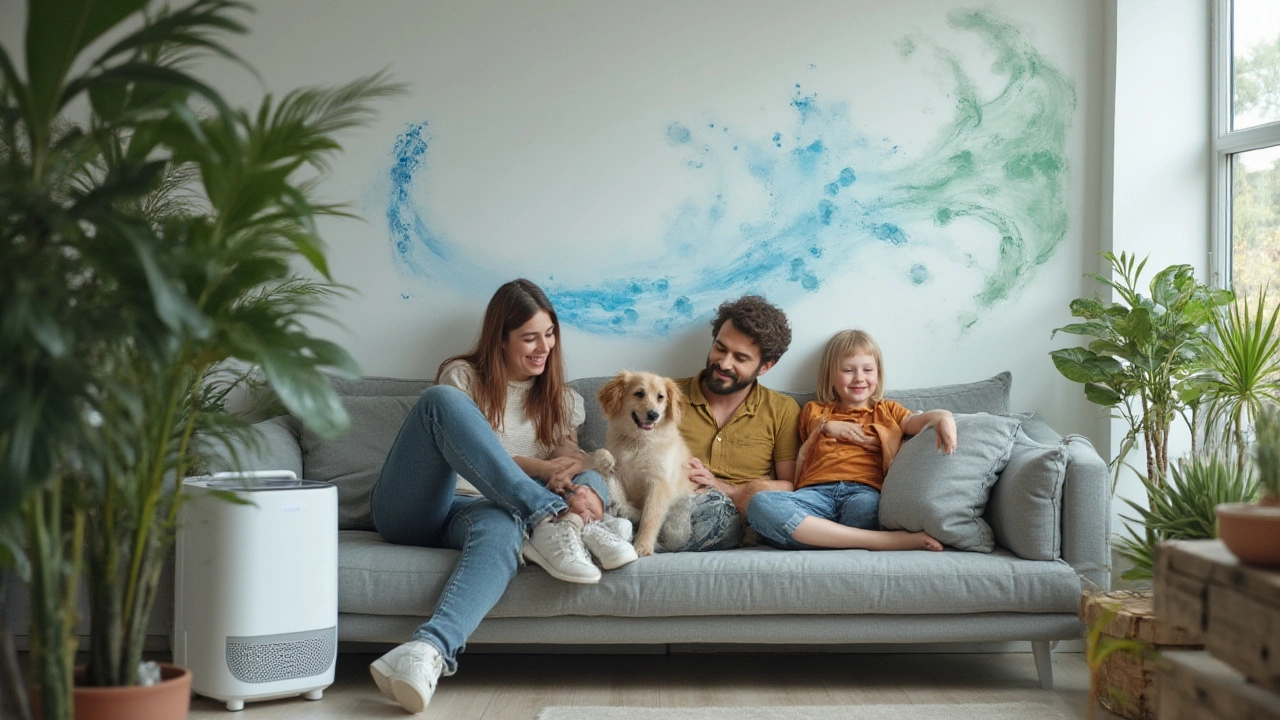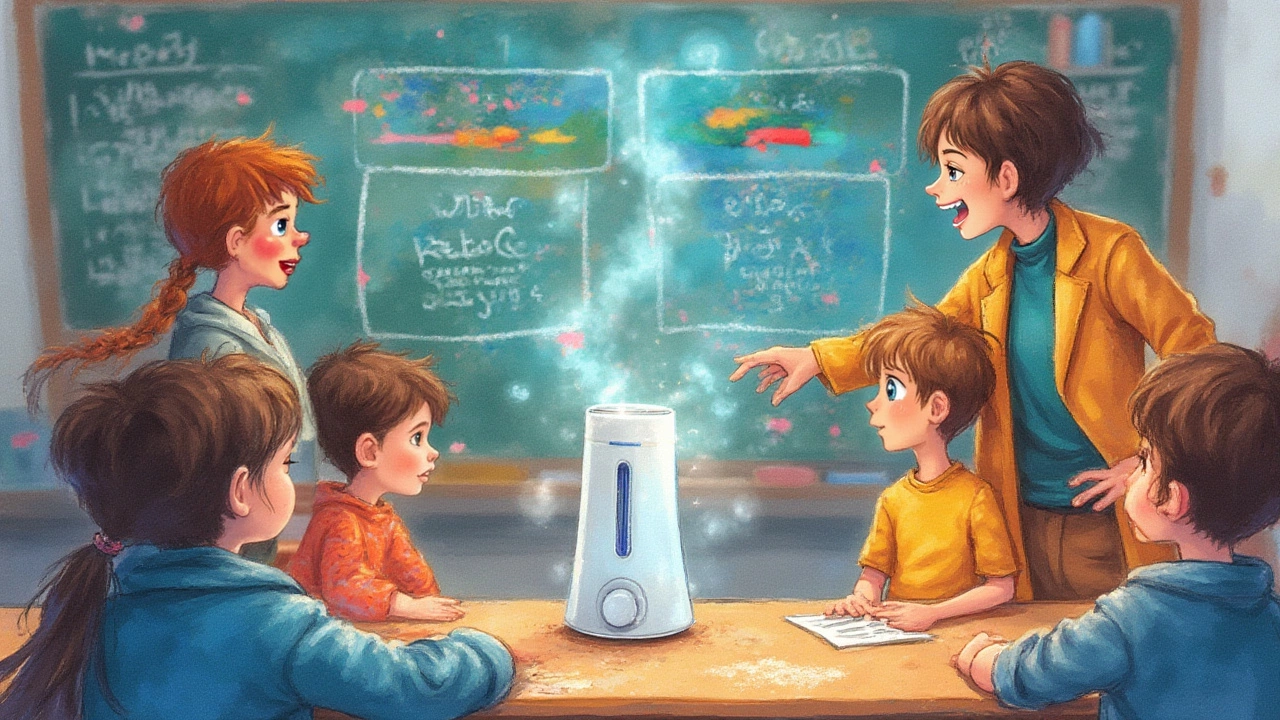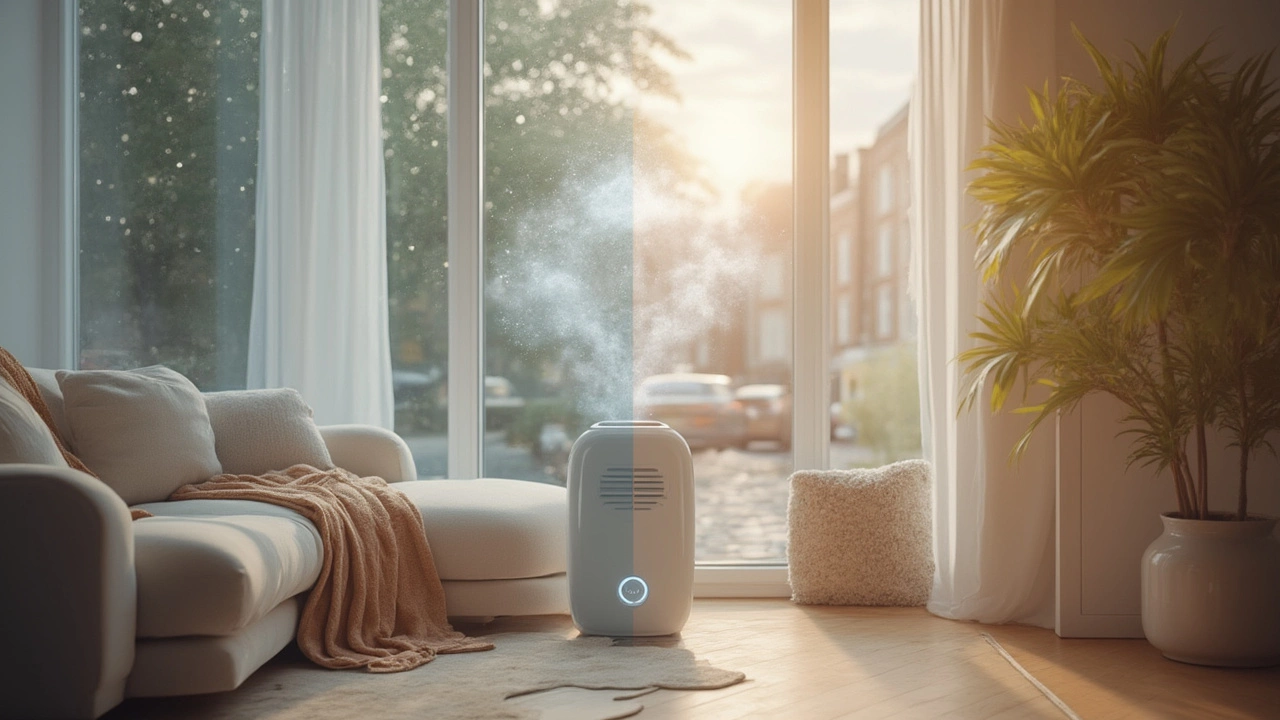Think your home’s air is cleaner than downtown traffic? Think again. Your sofa, the dog, last night's dinner, even your cleaning sprays all work like a tag team, sending invisible junk flying through your living space. The big question is: if you buy the latest sleek air purifier, will those microscopic enemies vanish—or will you just end up running another noisy gadget that doesn’t help at all?
What Air Purifiers Actually Do (and What They Don’t)
There’s no magic in that buzz the first time you run a new air purifier. These devices are built for one thing: sucking air in, trapping nasties, and blowing out something fresher. But the details matter. Most home models use a HEPA (High-Efficiency Particulate Air) filter, which isn’t just a fancy acronym—it’s tested to snag at least 99.97% of particles down to 0.3 microns. That includes dust, pollen, pet dander, and even some bacteria. But does it stop at that? Not quite. What about odors, gases, or sneaky chemicals? That’s where you’ll see activated carbon come into play. Purifiers that include both HEPA and activated carbon filters can grab both particles and absorb certain chemicals and smells.
But here’s the cut: air purifiers don’t cure allergies, banish viruses instantly, or get rid of every bad smell on earth. The flu? Don’t bank on the purifier alone. If your family loves burning candles or keeps the windows open during pollen season, no gadget can keep up with a tidal wave of pollutants. Think of an air purifier more as a bouncer at your air’s club—it keeps most riffraff out but can’t patrol every corner if the place is overcrowded.
Various studies have tested purifiers in real homes, not just labs. For example, a 2022 EPA-backed review found that a good HEPA filter can slash dust and allergen levels in rooms by 50% or more when sized right. People with asthma or severe pollen allergies often report noticeable relief, especially in bedrooms. Still, those same studies warn about user error—buying too small a purifier, forgetting to change the filter, or running it on low mode where it barely circulates air. Even the best-rated model is powerless if you stick it in a corner behind a plant and never touch it again.
Now, here’s something most people miss. Air purifiers aren’t one-size-fits-all. If someone in your house is sensitive to VOCs (like the stuff off-gassed from fresh paint or new furniture), you need a model with a legit carbon filter. People battling wildfire smoke? Some units now feature special smoke filters, tested to deal with those super-tiny soot particles—think less than 0.1 micron in size. The right tool depends entirely on the problem in your air. Don’t assume the cheapest Amazon bestseller does it all.
How can you measure if the machine is actually helping? Grab a $100 air quality monitor off the web. Track your PM2.5 (fine particle) readings before you run the purifier, then after a few hours on high. If numbers plummet, the machine’s working. If not, double-check the filter, placement, and the model’s room coverage recommendations.
Finally, here’s a handy table showing what different types of air purifiers are good for:
| Purifier Type | What It Filters | What It Misses |
|---|---|---|
| HEPA Filter | Dust, pollen, pet dander, smoke, bacteria | Odors, gases, chemicals |
| Activated Carbon | Odors, VOCs, some chemicals & gases | Particles (dust, pollen, etc.) |
| UV-C/Other Tech | Some germs, potential virus in air (limited evidence) | Particles, heavy odors |
Bottom line: air purifiers work, but not like miracle gadgets. Use them right and keep your expectations real, and the air in your living room can feel a whole lot lighter.

Common Misconceptions and Surprising Truths About Air Purifiers
Everyone’s heard a story—maybe your neighbor’s cousin swears their air purifier cures pet allergies overnight or wipes out sneezes from dusty rugs. Want the honest truth? Half of what people say about air purifiers is either hyped-up marketing or wishful thinking.
Let’s bust a few myths that pushed a lot of folks to buy the wrong machine. One huge misconception is that a air purifier will kill all airborne viruses. Sorry, it’s not a hospital isolation room. Yes, some advanced HEPA models and a few pricey UV-C filters can reduce virus particles, especially if you catch them before they land on surfaces. But for COVID-19 or the common cold? Cleaning hands, ventilation, and vaccines matter more. Air purifiers help chip away at risks but won’t turn your living room into a sterilized bubble.
Another surprise: filters aren’t forever. Some people forget about the core bit—changing or cleaning that filter! HEPA filters typically last 6-12 months, but smoke-filled air or heavy shedding pets wear them down quicker. If the purifier starts roaring louder or smells weird, it’s begging for fresh parts. Skipping filter changes is like using a used-up vacuum bag… nothing gets clean.
Have you seen those "ionic" or "ozone" air cleaners on late-night TV? Be careful. Ionic tech spits out ions to clutch onto particles, but some models produce ozone at unhealthy levels—especially dangerous for anyone with breathing problems or kids in the house. The EPA and health experts suggest sticking to mechanical HEPA and carbon systems unless you understand what you’re buying. Ozone can irritate your lungs even if you can’t smell it.
Let’s talk square footage. People love plugging in a tiny device, hoping it will purify their open-concept house. It doesn’t work that way. A $70 purifier for a bedroom simply can’t handle a full downstairs living/kitchen combo. Match your machine to the room size—it should say right on the box or in the manual. Oversized is better than undersized, especially if you want results during allergy or wildfire season.
Odors are a whole other game. Some people report no difference for musty smells or kitchen odors. That’s because mechanically filtering particles does zilch for gaseous compounds without carbon. Even with a good carbon filter, ongoing sources of smells (like mold or heavy smoking) can overwhelm any machine. It’s smarter to attack the smell at its source and then let the purifier help with lingering traces.
Is there a risk in running an air purifier all day? Not really, unless you ignore filter changes or pick a loud, power-guzzling model. Most top-selling brands today are ENERGY STAR certified—meaning you’ll barely notice them on the power bill. Sound is another issue though. High settings work best but some motors get noisy, especially at night. Pick a model with a quiet or sleep mode for the bedroom. A whirring fan might be white noise for some, but for light sleepers it can ruin a good night’s rest.
Here's a quick list to keep your air purifier performing at its best:
- Match the purifier to the right room size
- Check and replace filters regularly (follow the manual)
- Keep doors/windows closed when purifying
- Avoid blocking the intake/outlet with walls or furniture
- Use air quality monitors to check improvements
If you’re sensitive to new tech, watch out for extras like "plasmawave" or bonus ionizers. Read reviews and skip features you don’t really need. And remember—regular vacuuming, using exhaust fans when you cook, and cracking a window on clear days all work hand-in-hand with your purifier.

How to Choose (and Actually Benefit From) the Right Air Purifier
Narrowing down the shelves of air purifiers isn’t just about grabbing something with the most five-star reviews. Think about your real needs. Got heavy allergies? Pets? Live close to highways or in wildfire-prone regions? Each situation calls for a different feature set and price point.
If you suffer from allergies year-round, prioritizing a true HEPA filter (watch for those exact words, not "HEPA-like") is non-negotiable. According to Asthma and Allergy Foundation of America, this alone can trap pollen, dust mites, and most pet dander that otherwise ends up in your nose. For pet households, pick extra-large filters since fur tends to clog them up fast. Wildfire smoke adds another headache—look for models with high CADR (Clean Air Delivery Rate) for smoke, not just dust. Ratings are published on the Association of Home Appliance Manufacturers (AHAM) website, or you can find the label on the box itself.
If chemical odors or new paint make you sick, aim for a purifier with a large, replaceable carbon filter—most budget models have only a token carbon mat that does almost nothing. Filter thickness counts; a filter cartridge as thick as your finger can soak up VOCs better than a paper-thin sheet. Some premium options boast sensors to auto-raise fan speed when pollutants rise. For chronic problems like apartment cigarette smoke or serious asthma, skip "smart" gimmicks and focus on brute-filtration power and verified user results.
If it’s your first time buying, set a budget for both machine and replacement filters. Filters get pricey—they often cost 30-50% of the original unit per year. Read returns policies, and if you notice zero change after a week, send it back. A good unit makes that difference: less sneezing, no visible dust on shelves, maybe even fresher sleep.
Cleaning matters, too. Vacuum or wash your purifier’s pre-filter regularly—this boosts performance and stretches replacement intervals. If you have kids or pets, check for child safety locks and tip-over protection. Automatic shutoffs for filter replacement can save you from running the thing with a clogged, useless filter (it happens more than you’d think).
Placement is underrated. Set it up where you spend the most time—bedroom, living room, or home office. Keep it away from corners and walls, and don’t suffocate the vents behind curtains or couches. Run it at higher speeds for a boost after vacuuming, when guests visit, or right after cooking. You’ll notice the air feels less stifling, especially if you get that musty smell after keeping windows closed all winter.
Finally, a few proven brands worth a look (as of July 2025): Coway, Honeywell, Blueair, Dyson, and Levoit. Each covers a range of budgets and room sizes. If you’re overwhelmed, check out monthly wirecutter-type rankings or owner reviews for your allergy or air quality problem. But remember: even the best gadget on planet Earth can’t help if you’re not tackling mold, leaks, or constant sources of pollution. Use purifiers smartly, and you’ll actually breathe easier—no hype, just fresher air in your daily life.

